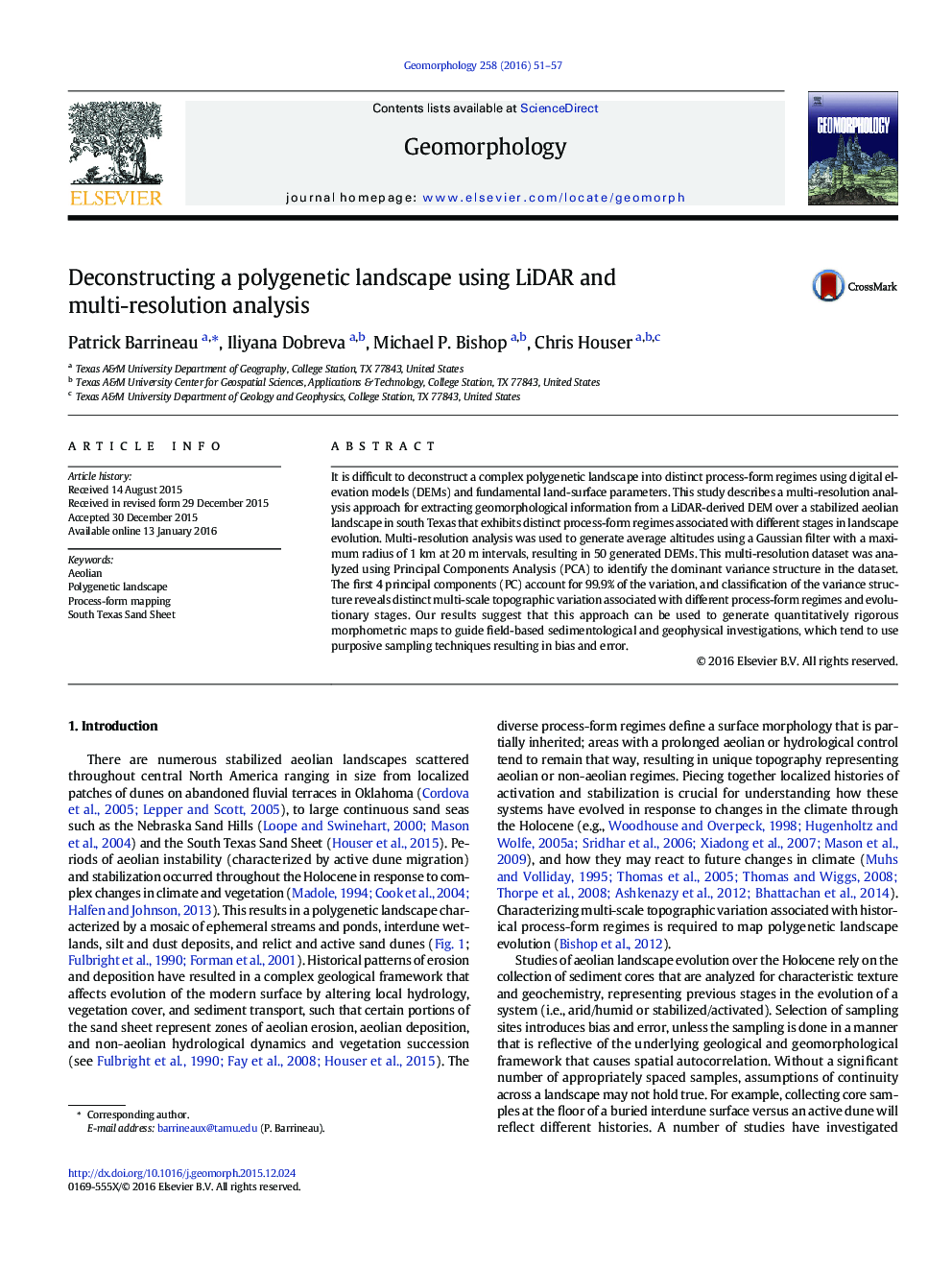| Article ID | Journal | Published Year | Pages | File Type |
|---|---|---|---|---|
| 4684071 | Geomorphology | 2016 | 7 Pages |
•Elevation models can mislead placement of soil cores.•PCA may be used to identify scale-dependent morphometries.•Classifying PCA results can help to delineate process-form regimes.
It is difficult to deconstruct a complex polygenetic landscape into distinct process-form regimes using digital elevation models (DEMs) and fundamental land-surface parameters. This study describes a multi-resolution analysis approach for extracting geomorphological information from a LiDAR-derived DEM over a stabilized aeolian landscape in south Texas that exhibits distinct process-form regimes associated with different stages in landscape evolution. Multi-resolution analysis was used to generate average altitudes using a Gaussian filter with a maximum radius of 1 km at 20 m intervals, resulting in 50 generated DEMs. This multi-resolution dataset was analyzed using Principal Components Analysis (PCA) to identify the dominant variance structure in the dataset. The first 4 principal components (PC) account for 99.9% of the variation, and classification of the variance structure reveals distinct multi-scale topographic variation associated with different process-form regimes and evolutionary stages. Our results suggest that this approach can be used to generate quantitatively rigorous morphometric maps to guide field-based sedimentological and geophysical investigations, which tend to use purposive sampling techniques resulting in bias and error.
